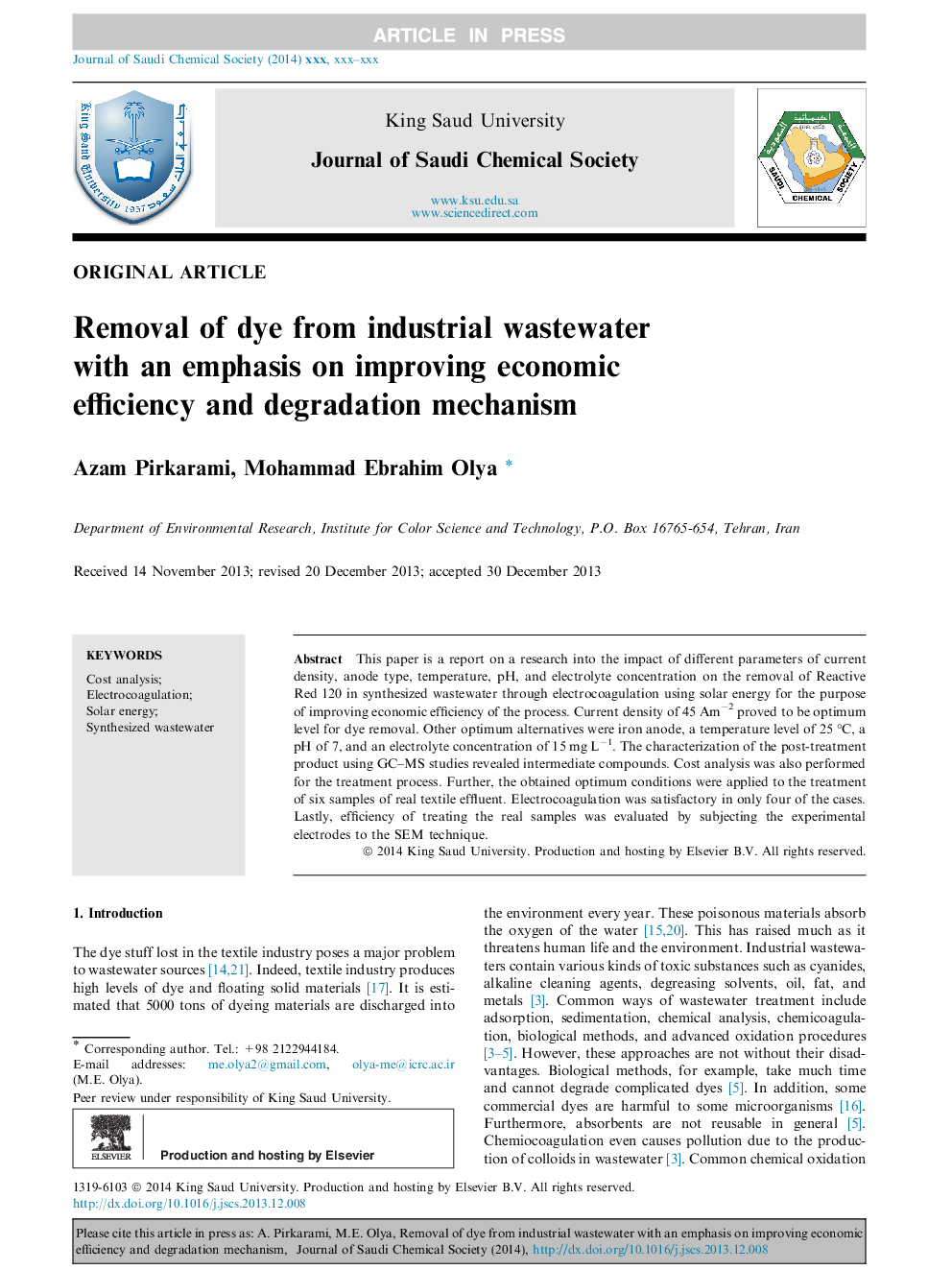| Article ID | Journal | Published Year | Pages | File Type |
|---|---|---|---|---|
| 4909415 | Journal of Saudi Chemical Society | 2017 | 8 Pages |
Abstract
This paper is a report on a research into the impact of different parameters of current density, anode type, temperature, pH, and electrolyte concentration on the removal of Reactive Red 120 in synthesized wastewater through electrocoagulation using solar energy for the purpose of improving economic efficiency of the process. Current density of 45 Amâ2 proved to be the optimum level for dye removal. Other optimum alternatives were iron anode, a temperature level of 25 °C, a pH of 7, and an electrolyte concentration of 15 mg Lâ1. The characterization of the post-treatment product using GC-MS studies revealed intermediate compounds. Cost analysis was also performed for the treatment process. Further, the obtained optimum conditions were applied to the treatment of six samples of real textile effluent. Electrocoagulation was satisfactory in only four of the cases. Lastly, efficiency of treating the real samples was evaluated by subjecting the experimental electrodes to the SEM technique.
Related Topics
Physical Sciences and Engineering
Chemical Engineering
Chemical Engineering (General)
Authors
Azam Pirkarami, Mohammad Ebrahim Olya,
